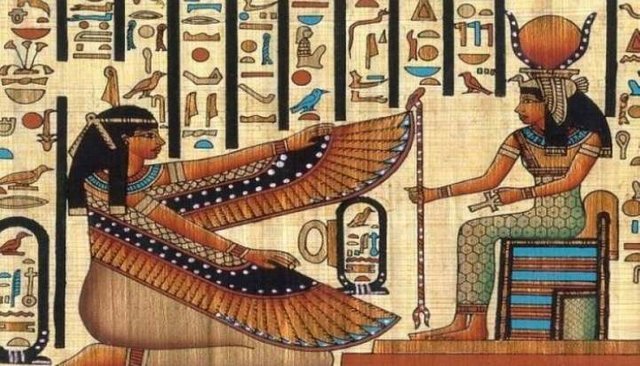
Egypt has the oldest recorded history in the world, and the history of ancient Egypt is divided into two complete eras: the prehistoric era and the second historical era.
In prehistoric times, the first Egyptians settled in the Nile valley (about 6000 BC) when they knew how to farm, domesticated animals and settled in small cooperative societies. Its civilization progressed and two states were formed in Egypt, the Plains and Upper Egypt, soon united in 3100 BC. . Under a central government headed by the pharaoh, and through (Mina) united the two nations.
In the second historical era, writing became known and manifestations of religion and art crystallized. This historical epoch was divided into 30 royal families and three nations, in which Egypt enjoyed a strong central government. It has also undergone periods of decline and disintegration that can be summarized as follows: Ancient times: Including two families 1 and 2, is the founding period.
unit. and laid the foundations of Egyptian civilization on solid foundations.
old countriesIt includes families from 3 to 6 (circa 2690 - 2180 BC), it was the age of complete internal security, when Egypt was able to reach the heights of glory in medical science , astronomy and engineering, but the age of the pyramid builders.
Old Kingdom by age of family reunion from 7 to 10 (c. 2180-2060 BC), chaos reigns, unrest prevails, art declines, but literature flourishes and princes good was able to reunify the country and revive it.
Medieval Kingdom: Includes families from 11 to 14 years old (circa 2060-1710 BC).
The kings were interested in foreign policy, controlling Lower Nubia and establishing extensive irrigation projects.
The Era of the Second Decline and includes the 15-17 family (circa 1710 - 1560 BC), in which Egypt fell under Hyksos occupation, until the arrival of the princes of Thebes. their homeland thanks to loyalists such as Saqnan Ra and his two sons Kamose, then Ahmose, and these are considered the founders of the modern state.
Modern State or Age of Empires: It covers the 18-20 dynasties (circa 1580 - 1085 BC), during which Egypt extended its sovereignty from the north of Syria and Mesopotamia to the sea the fourth dynasty in Sudan, and Thebes was the capital of this empire, and it was there that the greatest temples and most magnificent mausoleums were built.
This was followed by the Third Depression, which included the 21-25 Families (circa 1085-663 BC), in which kings of Libyan descent ruled the country, including Sheshenq, Yukuris, and other Nubians. , the most famous of which is Yan Khi.
When the Assyrians invaded, the Egyptians revolted and liberated the country from their control under the leadership of Psamtik I, who established the 26th Dynasty (circa 663 - 529 BC) and restored it. the power of Egypt and the era of rebirth began, then the Persians took over the country and some powerful figures sought to expel them, but they returned during 27 Dynasties 30.
The history of the Pharaohs ended when Alexander the Great invaded Egypt and expelled the Persians in 332 BC.
The following are the names of the rulers of the Pharaohs distributed over the historical dynasties and chronology of these dynasties according to the most probable statements:
Second Age, from approx. 3100 to 2690 BC.
First Dynasty:
- Narmer (Mina)
- Aha
- Khent (Jar)
- Jet (Warji)
- Daemon (Den - Smitty)
- Adaj Ib (Anzeb)
- Sanmo
- Qa'a
The Second Dynasty:
- Hotep Sekhemwy
- Nebre
- Niter
- O Ng (Awad Genas)
- Sindi
- Braeb Sen (Nefer Kare)
- Ga Sekhem
- Kha Sekhemwy
- Dja Dja
Old Kingdom , age of the pyramid builders,
from about 2690 to 2180 BC.
The Old Kingdom begins with the beginning of the Third Dynasty and ends with the Sixth Dynasty. At that time, the pharaohs often built pyramids near their palaces, and the unification of the country reached its peak at this time, and this time was characterized by the rapid development of architecture, construction, sculpture and carving.
The Third Dynasty: - Djoser:
He is famous for having built the Step Pyramid in Saqqara. - Sanakht
- Kha Ba
- Neferka
- Ho (Huni)
The Fourth Dynasty:
- Sneferu
- Khufu: He is the builder of the Great Pyramid in Giza
- Ddef Ra
- Khaef Ra (Khafre): He is the builder of the second pyramid in Giza
- Menkaure: He is the builder of the Smaller Pyramid In Giza
- Shebeskaf
- Ghent Cows
The Fifth Dynasty:
- User Kaf (Air Maat)
- Sahure
- Nefer Air Kare (User Khao Kakao)
- Shepska Ra
- Neferef
- Ni Usra -
from Kaw Hur - Jed Kare Assi (Jed Khao)
- Unas: He is the owner of The pyramid known by its name, southwest of the Step Pyramid of Djoser.
The Sixth Dynasty:
- Titi
- User Kare
- Babi the First (Mri Ra)
- Meri In Ra (Anti Amsa F)
- Babi the Second (Nefer Ka Ra)
The end of the Old Kingdom, the beginning
of the First Intermediate Period
, from 2180 to 2060 BC:
family from the 7th to the 10th century, was a period of feudalism, then decline, leading to socio-economic recession, then social revolution. Literature flourished during this time.
Seventh Dynasty: The names of the kings of this dynasty are not known nor the length of their reign.
Eighth Dynasty: The names of the kings of this family are not known with certainty.
Ninth Dynasty: The kings of this clan are from Ihnasia, they are Khiti and his family.
X Dynasty: The names of the kings of this family are not known with certainty:
- Neferkare
- or Khare
- Merikare, the
era of the Middle Kingdom
from 2060 to 1785 BC
. The Eleventh Dynasty:
- Sahr Tawi (Antif I)
- Waah Ankh (Entef the Second)
- Takhtnebtepnefer (Antef the Third)
- Sankh Aiptawy (Mentuhotep I)
- Nebhepetre (Mentuhotep the Second)
- Nebkhrure (Mentuhotep III)